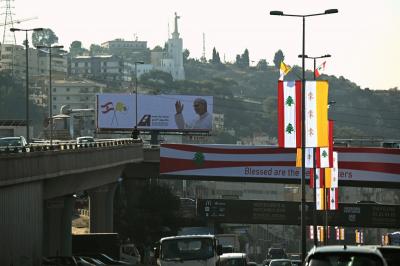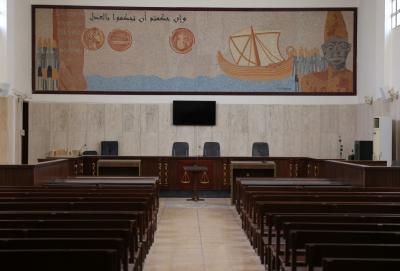Since the dawn of history, humans have roamed vast stretches of the Earth in search of land that met their needs and circumstances. Natural borders determined ownership of chosen territories, while other natural factors—such as sources of fresh water—shaped agricultural communities near rivers and lakes. As settlement and urbanization developed, the foundations of civilization took shape. Soon, a bond emerged between chosen lands and their inhabitants, forming the basis of identity. People instinctively defended what they regarded as their “homeland,” an extension of themselves and the labor of their ancestors. In monuments such as fortresses, walls, pyramids, castles, and hanging gardens, they inscribed their identities—symbols that became synonymous with specific peoples and territories.
Thus, the world’s first civilizations were born: the Indus Valley, Mesopotamia along the Tigris and Euphrates in Babylon, the Nile Valley in Egypt, and the Yangtze and Yellow River civilizations in northern China. These civilizations succeeded one another over the centuries, each grounded in geography as the essential foundation for their birth and continuity. The constant denominator was land and people, with communication evolving into languages. Each region understood its boundaries instinctively, without the need for treaties or explanations. Geography imposed itself not just as a natural factor but as a powerful force shaping identity and belonging.
In his book Prisoners of Geography, journalist Tim Marshall argues that international decisions, events, conflicts, and civil wars cannot be understood without considering the hopes, fears, and preconceptions shaped by history—and how these are inevitably influenced by geography, the physical environment within which individuals, communities, and nations evolved.
Natural borders were not mere obstacles. They defined influence. Mountains, rivers, and seas became dividing lines between peoples. The Andes separate Chile from Argentina. The Great Wall of China defended imperial frontiers. The Zagros Mountains shielded Persia from repeated invasions and major military campaigns, while providing vital natural resources.
In the Mediterranean basin, geography played a similar role. The Alps isolated the Italian peninsula from northern Europe, allowing Rome to build its empire with limited external interference. The Pyrenees created a natural barrier between France and the Iberian Peninsula, hindering invasions. The Atlas Mountains shielded North African kingdoms from northern incursions, while the Sahara Desert prevented expansion from the south toward the north.
Regionally, geography has shaped the Middle East’s map of influence. The Mount Lebanon range, the Orontes River, and the Taurus Mountains formed natural barriers that affected invasions and territorial expansion. The Syrian Desert and the Sinai Desert disrupted military campaigns, forcing armies into narrow strategic corridors. The Jordan River became both a geographical divider of the West Bank and a sensitive geopolitical frontier at the heart of the Israeli-Palestinian conflict, particularly amid repeated calls for a two-state solution. The Golan Heights remains a strategic plateau between Syria and occupied Palestine, among the most contested regions since Israel seized it in 1967. In southern Syria, the mountainous Suwayda region connects three regional points, while the Syrian coast serves as the country’s only maritime outlet to the outside world.
Seas and coastlines act as both routes and barriers, shaping trade, politics, and security. For some nations, maritime access has been a blessing. The Netherlands, despite limited natural resources, used its vast coastline to dominate trade routes. For others, coastlines brought perpetual threats.
Lebanon’s geography, before the borders we know today were drawn, was a civilizational crossroads. Mentioned in the Epic of Gilgamesh, it carries one of the oldest geographical names in history, giving its name to a homeland. The Canaanites/ Phoenicians lived here, and because of its strategic location and natural features, the land attracted waves of rulers: Assyrians, Babylonians, Persians, Macedonians, Romans, Byzantines, Islamic dynasties, Crusaders, Mamluks, Ottomans, and finally the French Mandate, which proclaimed Greater Lebanon in 1920 and led to independence in 1943.
Modern borders were the product of agreements among colonial powers. The Sykes-Picot Agreement between French foreign minister Georges Picot and British diplomat Mark Sykes—backed by Russia—carved up Ottoman territories during World War I. With the collapse of empires, international law developed, and the United Nations was established. Yet borders remain defining lines of identity, fueling a sense of belonging and, often, conflict.
We inherited maps drawn by departed powers—boundaries that created fragile states and stoked sectarian and nationalist divisions. These maps still dictate our destinies. The idea of a “New Middle East,” floated after 2003, was little more than a continuation of the same logic. History is filled with wars and tragedies caused by colonial policies that drew borders with rulers and pens while the League of Nations spoke of “self-determination.”
Where are we today with that principle? Past partitions ignored it entirely, prioritizing imperial interests over geographic or demographic realities. The result was political entities whose instability persists.
Today, tools of control have changed, as have some of the powers pulling the strings. Yet the motives remain familiar. Despite smart armies, technological precision, new trade corridors, and interwoven global policies, partition continues. Sudan stands as a recent example of redrawn maps driven by international interests.
Will geography and identity in our region prevent the imposition of a new partition project—particularly in war-torn Syria? Or will sectarian and religious balances become the new pen, reshaping borders? Lebanon, too, would inevitably be affected, though perhaps not directly. The northern and eastern borders could be redrawn. The south, however, already has the “Blue Line,” despite disputes over certain points.
We do not choose the geography we are born into, nor can we change human nature or historical shifts. But we can choose to understand, accept, reject, or even participate in shaping our future borders—or preserving them. Borders should be more than inherited geography. They have become a reality too vast to be confined by fences or walls. Only by recognizing this can we safeguard identities on paper and in land together, without being forced to redefine nationality whenever lines are redrawn.
*Lebanese writer, director, and producer
Please post your comments on:
comment@alsafanews.com
 Politics
Politics













